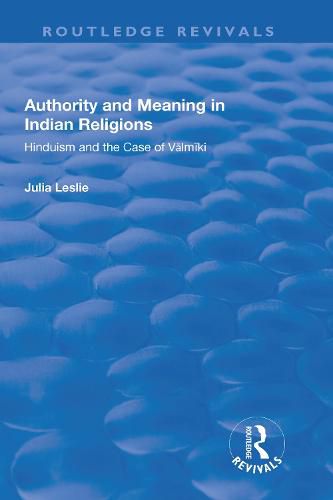Readings Newsletter
Become a Readings Member to make your shopping experience even easier.
Sign in or sign up for free!
You’re not far away from qualifying for FREE standard shipping within Australia
You’ve qualified for FREE standard shipping within Australia
The cart is loading…






This title was first published in 2003. Can a text be used either to validate or to invalidate contemporary understandings? Texts may be deemed ‘sacred’, but sacred to whom? Do conflicting understandings matter? Is it appropriate to try to offer a resolution? For Hindus and non-Hindus, in India and beyond, Valmiki is the poet-saint who composed the epic RA mA yaAa. Yet for a vocal community of dalits (once called ‘untouchables’), within and outside India, Valmiki is God. How then does one explain the popular story that he started out as an ignorant and violent bandit, attacking and killing travellers for material gain? And what happens when these two accounts, Valmiki as God and Valmiki as villain, are held simultaneously by two different religious groups, both contemporary, and both vocal? This situation came to a head with controversial demonstrations by the Valmiki community in Britain in 2000, giving rise to some searching questions which Julia Leslie now seeks to address. Exploring the relationship between sacred text and religious meaning, Leslie presents a critical, text-historical study of the figure of Valmiki drawing on the sacred texts traditionally attributed to him: the VA lmAGBPki RA mA yaAa and the YogavA siA(1)A+/-ha RA mA yaAa, both in Sanskrit. While identifying and examining the various strands of popular stories concerning Valmiki, Leslie disentangles the earliest evidence for him from the narrative threads of passing centuries, and considers the implications of that process. This ground-breaking analysis, illustrated with paintings of Valmiki, makes a unique contribution both to our understanding of the interlocking beliefs of many religious communities and to a greater awareness of the problematic relationship between sacred text and contemporary religious meaning. Invaluable to students of both the study of religions and South Asian studies, this book will also be of interest to Indian communities in the diaspora seeking to understand their roots, including (but not exclusively) the Valmikis.
$9.00 standard shipping within Australia
FREE standard shipping within Australia for orders over $100.00
Express & International shipping calculated at checkout
This title was first published in 2003. Can a text be used either to validate or to invalidate contemporary understandings? Texts may be deemed ‘sacred’, but sacred to whom? Do conflicting understandings matter? Is it appropriate to try to offer a resolution? For Hindus and non-Hindus, in India and beyond, Valmiki is the poet-saint who composed the epic RA mA yaAa. Yet for a vocal community of dalits (once called ‘untouchables’), within and outside India, Valmiki is God. How then does one explain the popular story that he started out as an ignorant and violent bandit, attacking and killing travellers for material gain? And what happens when these two accounts, Valmiki as God and Valmiki as villain, are held simultaneously by two different religious groups, both contemporary, and both vocal? This situation came to a head with controversial demonstrations by the Valmiki community in Britain in 2000, giving rise to some searching questions which Julia Leslie now seeks to address. Exploring the relationship between sacred text and religious meaning, Leslie presents a critical, text-historical study of the figure of Valmiki drawing on the sacred texts traditionally attributed to him: the VA lmAGBPki RA mA yaAa and the YogavA siA(1)A+/-ha RA mA yaAa, both in Sanskrit. While identifying and examining the various strands of popular stories concerning Valmiki, Leslie disentangles the earliest evidence for him from the narrative threads of passing centuries, and considers the implications of that process. This ground-breaking analysis, illustrated with paintings of Valmiki, makes a unique contribution both to our understanding of the interlocking beliefs of many religious communities and to a greater awareness of the problematic relationship between sacred text and contemporary religious meaning. Invaluable to students of both the study of religions and South Asian studies, this book will also be of interest to Indian communities in the diaspora seeking to understand their roots, including (but not exclusively) the Valmikis.